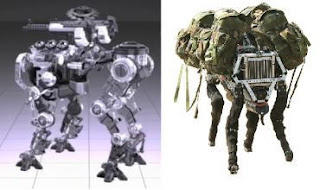SKYNET is a distributed network of robotic telescopes operated by students, faculty, and staff at the University of North Carolina at Chapel Hill. The network began operation in January 2006 with the opening of the six PROMPT telescopes in Chile. Since then, several more telescopes in the U.S. and Europe have been integrated into the network. We are ramping up to integrate many new telescopes around the world throughout 2011 and 2012.
Frivolities aside, the Terminator films have repeatedly foretold this apocalyptic scenario, and it has captured the imaginations of sci-fi enthusiasts for over a quarter century now. In fact, the exact date of “Judgment Day” has been rescheduled several times since the first film was released in 1984, another famous techno-dystopian year. Originally, Skynet became self-aware on August 4th, 1997, and Judgment Day ensued on August 29th. Then, there were a few rescheduled robotic Armageddons in the mid-2000s as Terminator progressed through a batch of sequels. Most recently, J-Day ended up getting pushed backed all the way to 2011, as revealed in Terminator: The Sarah Connor Chronicles.
Gamma-ray bursts (GRBs) are the most powerful explosions the Universe has seen since the Big Bang. They occur approximately once per day and are brief, but intense, flashes of gamma radiation. They come from all different directions of the sky and last from a few milliseconds to a few hundred seconds. The primary mission of the robotic array is to obtain early time data of these transient phenomena in multiple bands.
While the array is not imaging GRB afterflows, individual telescopes perform scheduled observations of targets of scientifc interest for researchers around the globe. Observers can track their observations through the automated system and ultimately retrieve their data directly from the world wide web.
Despite undershooting the self-awareness forecast, James Cameron’s creation correctly foresaw the rise of automation and robotics in the military. For example, in 2010 alone, there were 118 drone strikes in Pakistan. Even though we were in the midst of Reagan’s Star Wars Initiative when Terminator first hit the silver screen, I doubt most could have imagined drone strikes in the news on a regular basis.
A large fraction of PROMPT's observing time is dedicated to outreach. High schools and universities across the state of North Carolina have used SKYNET to teach astronomy for several years, and partner institutions across the U.S. are now using Skynet to enhance their curriculum. We also have programs that allow members of the general public to use Skynet's telescopes.
Singularity Hub is no stranger to the meteoric rise of robots in the military. We witnessed the unmanned X-47B fighter jet spread its wings, the four-legged robotic Big Dog go for a walk, a robo-gun that can shoot the legs off a cockroach from 3 km away, and guard-bots protecting a cache of world-destroying nuclear weapons. Who knows what other fantastical creations are baking in DARPA’s R&D ovens? I know peace-lovers may wince when they see military inventions pop up in SciTech news, but they should know that military can seed some pretty cool technologies, like the Internet, for example.Besides, what is there to worry about? A robo-pocalypse? Even if we’re due for one, Skynet has meddled in the timeline yet again, and Judgment Day has been pushed even further back. Ray Kurzweil thinks AI will pass the Turing Test by 2029, so that’s shaping up to be a good candidate year for the next Terminator film. Hopefully, Arnold will still be around to protect us.



No comments:
Post a Comment